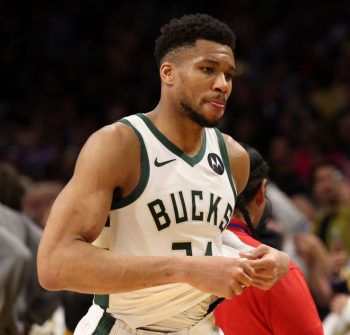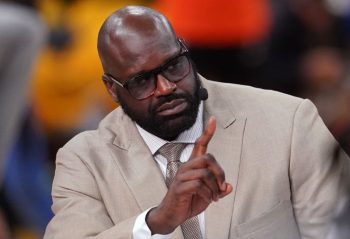NBA
Miami’s Struggles About More than One Player

The Miami HEAT appeared to successfully turn the corner on a quick rebuild, having advanced to the bubble’s 2020 NBA Finals. It looked as though Miami took a short cut even, rebounding from the LeBron James, Dwyane Wade and Chris Bosh era incredibly quickly. Ultimately, they did so through smart drafting – including the selections of Bam Adebayo, Kendrick Nunn and Tyler Herro – plus, a little luck, like the signing of Jimmy Butler and smartly sticking with Duncan Robinson.
But despite the fact that they should have improved from last season, the tide may have turned again in South Beach.
Through 15 games, the HEAT are an underwhelming 6-9 with losses in each of their last two games. Miami is also scoring fewer points per game than last season – 109.3 versus 112 – while giving up more – 113.1 against 109.1.
Miami has played the 14th-toughest schedule in the NBA, and there are some embarrassing and noteworthy loses thus far. They lost by a resounding 47 points to the Milwaukee Bucks earlier this season, with extra harsh defeats of 20 points to the lowly Detroit Pistons and the mediocre Toronto Raptors.
What’s to blame for Miami’s woes? Unfortunately for the HEAT, it’s a number of things.
First of all, they need more from a few of their stars – and it starts at the very top. Jimmy Butler was Miami’s leading scorer in 2019-20, posting 19.9 points per game. But this season, Butler is scoring just 15.8 points per game on a sub-par 44.2 percent shooting. While Butler shot poorly from three-point range last season, too (24.4 percent), he hasn’t connected on a single three-pointer yet in 2020-21. This, coming from a guy who shot 34.7 percent from deep in 2018-19 and 35 percent in 2017-18.
But it’s not just his lack of scoring that’s hurting. Butler is also collecting fewer assists and rebounds as well. He’s averaging only 5.5 rebounds and 5.3 assists per game, down from 6.7 ad 6.0 last season.
However, Butler’s main struggle this season has nothing to do with any statistic or slump. Butler has missed seven straight games due to COVID-19 protocols. Although to go-scorer wasn’t playing particularly well prior to isolating from the team – scoring in single digits twice – the HEAT are always in better shape if their leader takes the floor with them.
It’s not just Butler either. Tyler Herro also needs to regain his bubble form, at least as far as shooting is concerned. After connecting on 38.9 percent on 5.4 three-point attempts in 2019-20, he’s sinking only 30.2 percent of his 5.3 three-point attempts per game this season.
While Herro is scoring more – 17.2 points per game this season – and doing so more efficiently, he’s doesn’t pose the same threat from deep this season. So while he’s sure to pick it up sooner than later, he must do so to put more pressure on opposing defense.
It’s fair to assume Herro will solve his long-distance shooting woes, but the fact that he’s also struggling from the free throw line is concerning because it speaks more to his form. Herro is still well above the league average, connecting on 76.5 percent of his attempts from the charity stripe, but he shot a scorching 87 percent on free throw attempts last season.
So what’s behind the slump? More importantly, which Herro can the HEAT count on for the remainder of 2020-21? As much as Herro is on track to grow into an incredible player, Miami needs his efficiency to return to last season’s form if they expect to compete. But like Butler, a major part of Herro’s struggles are off the court.
Herro is currently dealing with an injury, having missed the last five games with neck spasms. Coach Erik Spoelstra noted that giving the injured Herro so many minutes before his big layoff likely exacerbated his injuries.
“There’s no telling for sure if this is why Tyler missed these games,” Spoelstra told the South Florida SunSentinel. “But it definitely didn’t help that he had to play and play that many minutes. We didn’t have anybody else at that point. If he didn’t play, then we would have had seven.”
But the HEAT’s struggles are about more than any one player – and that’s a big part of what makes Miami, Miami.
Still, their team stats are equally puzzling, like that the Miami HEAT currently ranks 20th in offensive rating and 23rd in defensive rating. In 2019-20, they were 7th in offensive rating and 11th in defensive rating. Obviously, something isn’t translating from last year, but what is it that’s missing?
Firstly, the HEAT are only the 18th best three-point shooting in terms of percentage. Last season, Miami was 2nd by shooting 37.9 percent. Herro returning to his old self should help quite a bit, and Butler making at least a few threes should improve spacing, too.
But it’s not just three-point shooting as the HEAT ranked last in field goal attempts last season, tallying just 84.4 attempts per game. And while they’re last again this season, they’ve managed to average even fewer attempts per game (81.7) despite maintaining nearly all of their roster.
The HEAT are also last in offensive rebounding, which translates to fewer field goal attempts and fewer points. And while Miami was 29th in offensive rebounds last season, they’re corralling 2.1 fewer rebounds this season (6.4) than in 2019-20 (8.5). What’s more, Miami is now last in total rebounds with only 40.9 per game. A number that also represents a fairly significant change as the HEAT were 17th a season ago with 44.4 per game – whew!
Lastly, Miami is turning the ball over more often than nearly any other team – sorry, Chicago – in 2020-21. During the prior campaign, the HEAT were barely middle of the pack, turning the ball over 14.9 times per game, a mark that left them 18th-best in the league. This season, they’re 29th and turning the ball over 17.7 times per game – dead last in terms of turnovers per 100 possessions.
It’s not all bad news for the HEAT, though. Bam Adebayo looks great so far, posting 20.3 points, 8.9 rebounds and 5.5 assists per game. Second-year stud Kendrick Nunn is averaging 21.5 points on 56 percent shooting through the past four games; while Duncan Robinson is still a flame thrower, shooting 44.4 percent on 8.4 three-point attempts per game.
The HEAT’s upside is still considerable, but it’s easy to wonder if they captured magic in a bottle last season.











